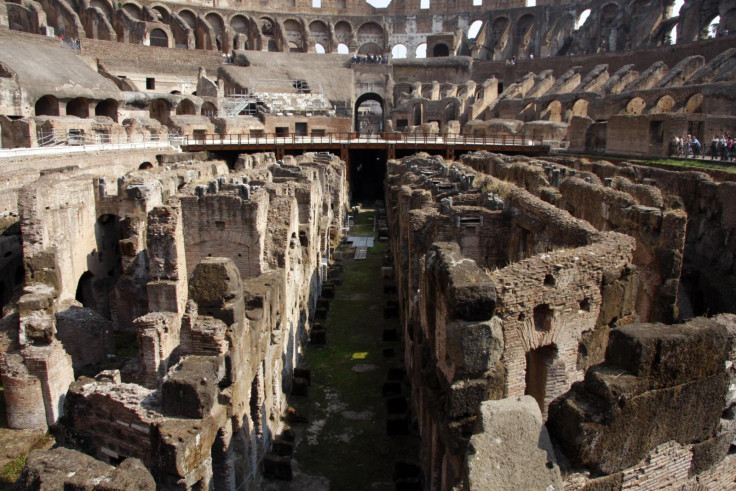Rome: Colosseum lift that carried wild animals into arena rebuilt after 2,000 years

Archaeologists recreate lifts that carried up Roman lions into the Colosseum where they fought to the death with gladiators.
"The number of lifts here was more than in any other Roman amphitheatre and Roman sources talk of 100 lions appearing together," Rossela Rea, director of the Colosseum told the Times.
"The wooden life we have rebuilt is for the public, but is to be studied, too. This is experimental archaeology that worked brilliantly," she added.
A million animals are believed to have been killed in the arena, ferried there by 28 timber machines from the hypogeum, the basement where lions, tigers, wild boar and condemned criminals were kept.
"Condemned prisoners, likely including Christian, were devoured by the animals," Rea added.
This assertion is contested by Mary Beard and Keith Hopkins in their book The Colosseum: "The fact is that there are no genuine records of any Christians being put to death in the Colosseum. It was only later that Christian writers invested heavily in the Colosseum as a shrine of the martyrs."
Heinz-Jürgen Beste of the German Archaeological Institute is heading up the project, studying the intricate maze of the subterranean Colosseum. "I understood why this site had never been properly analysed before then. Its complexity was downright horrifying," he told the Smithsonian magazine.
Using Roman technology, a team of archaeologists and engineers built a wooden lift that could lift a cage carrying 300 kg of wild animals up to a height of 24ft.
A system of pulleys ensured that a lid in the cage and the trap door above opened simultaneously to release the animals.
The combined strength of eight slaves would have been required to power the lift by turning the enormous wooden shaft at its centre.
The €20m budget for the project is funded by Providence Pictures who are making a documentary of the reconstruction. Gary Glassman, producer of Colosseum: Roman Death Trap explained that during the making of the documentary a wolf was placed inside the cage and hoisted up to the amphitheatre.
"It was the first time that a wild animal had been released into the Colosseum in 1,500 years," said Glassman.
"I would love to have used a lion, but there were obvious safety issues involved. In the end, we chose a wolf because it is the symbol of Rome.
"One of the reasons we are attracted to the Colosseum is because of the incredible violence that went on here," said the director.
"The question it poses is, how could such an advanced culture have staged such bloody spectacles? The Colosseum is a snapshot in stone, a physical embodiment of the culture of Rome."
© Copyright IBTimes 2025. All rights reserved.






















